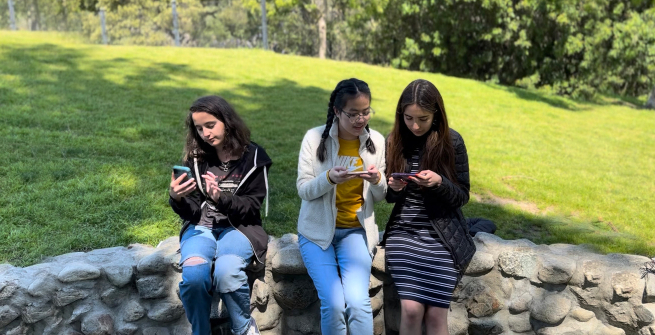My name is Angelina Chow, and as a Public Health Ambassador for the Los Angeles County Department of Public Health (LACDPH), I have received specialized training on timely COVID-19 health and safety information, as well as access to important public health information and resources to share as a community leader. In my role as a student ambassador for the LACDPH, I am committed to promoting the health and safety of my community through various initiatives. My specific area of interest is in raising awareness about the impact of social media on teenage mental health. I am a member of the Palms and Playa Vista Teens Leading Change (TLC) project, a volunteer program funded and operated by the Los Angeles Public Library, which aims to empower teenagers to create positive change in their communities. Currently, our TLC group is focused on examining the effects of social media on teenage mental health and body image. As a community leader, I am eager to contribute to this important work and to help increase awareness about this issue.
Social media plays a large role in modern life, especially for teenagers. From platforms such as Instagram, TikTok, Facebook, and WhatsApp, teenagers use social media to obtain information, connect with others, share their experiences, express themselves, and interact with the world in general. While social media has many benefits, constant exposure to the online world can have negative impacts on teenage mental health. What is often overlooked is the connection between social media and mental health. To promote mental health, it is important to educate teenagers and the community about the positive and negative aspects of social media. It is also important to distinguish healthy social media habits from unhealthy social media habits. According to Statista, a website providing market and consumer data, Facebook, YouTube, WhatsApp, and Instagram are among the most popular social media platforms. In addition, a recent Pew Research Center survey finds that younger Americans stand out for embracing a variety of platforms and using them frequently. With the increased use of social media, it is important to be mindful of social media use and regularly assess its impact on mental health and well-being.
Social media has both positive and negative impacts on teenagers. Social media can be positive as it can help teenagers connect with friends and family, build new relationships, and find support for issues they may be facing. Social media can also be beneficial because it can provide a platform for creativity and self-expression, allowing teenagers to share their art, music, and writing with a wider audience. Additionally, social media can help teenagers stay informed about current events and social issues, empowering them to take action on causes they care about. Social media, however, also has drawbacks. It can be a source of stress and anxiety for teenagers, as they may feel pressure to present a perfect image of themselves online. Social media can also contribute to cyberbullying, which can be especially harmful to teenagers who are already struggling with self-esteem and identity issues. Furthermore, social media can be addictive, leading teenagers to spend excessive amounts of time online and neglecting other important aspects of their lives, such as schoolwork and physical activity. Finally, social media can expose teenagers to inappropriate content, including violence, pornography, and hate speech, which can negatively affect their mental health and well-being. Recognizing the effects of social media will allow teenagers to use social media in a responsible manner.
In today’s digital technology era, teenagers must be conscious of developing healthy social media habits and avoiding unhealthy ones:
- Using social media to connect with friends and family
- Using social media to learn new things and explore interests
- Following accounts that promote positivity and mental health
- Setting limits on social media use and taking breaks when needed
- Being mindful of privacy settings and taking steps to protect personal information
- Engaging in healthy debates and discussions with others
- Using social media to express oneself creatively
- Unplugging from social media before bed to promote better sleep
By limiting our exposure to negative or harmful content, seeking out positive and supportive sources of information and support, and engaging in healthy and meaningful activities, teenagers can protect their mental health and well-being while still enjoying the benefits of social media.
—Written by Angelina Chow. Angelina is a 9th-grade student at LACES.
—Emily Meehan, Young Adult Librarian, Palms-Rancho Park Branch
The Teens Leading Change initiative has funded and launched 39 projects across 50 branches, including 4 projects across 7 branches that are happening now!
